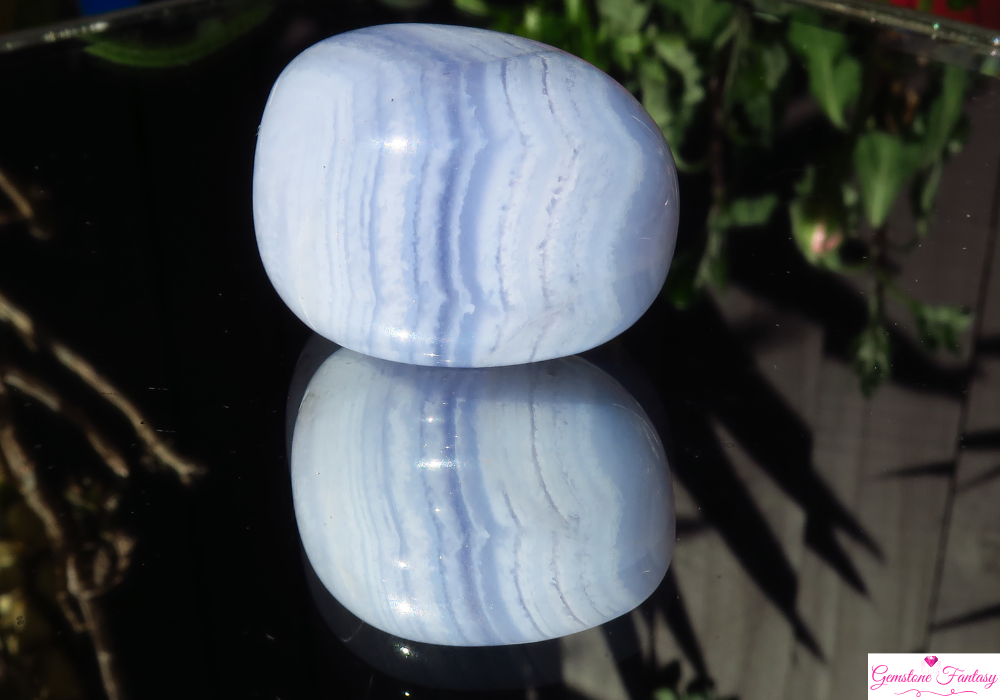Amber is an ancient gemstone that stands apart from traditional minerals, as it is formed from fossilized tree resin rather than inorganic material. This organic gemstone is cherished for its warm hues, ranging from golden yellows to deep reds, and is often found containing ancient plant or insect inclusions, making it a true window into prehistoric times. Amber has been prized for centuries, not only for its beauty but also for its supposed healing and metaphysical properties. It remains popular in jewelry, decorative objects, and as a collector’s item.
Geological Formation
Amber forms from the resin of ancient trees, primarily conifers, which exuded the sticky substance millions of years ago as a form of protection from disease and injury. Over time, this resin became buried under layers of sediment and underwent the process of fossilization, transforming into the hardened, semi-transparent material we know today as amber.
This process can take anywhere from millions to tens of millions of years, with some of the most notable amber deposits dating back to the Cretaceous period (approximately 100 million years ago). The largest and most famous amber deposits are found in the Baltic region, particularly in countries like Russia, Poland, and Lithuania. Other sources include the Dominican Republic, Mexico, Myanmar, and even parts of the United States.
Varieties and Classifications
Amber comes in a wide range of colors and varieties, each offering unique qualities that affect its appearance and value. Some common types include:
- Baltic Amber: The most famous and abundant type, it is found in the Baltic Sea region and is known for its clarity and golden hues.
- Dominican Amber: Known for being clearer and more transparent than Baltic amber, this type often contains insect inclusions and can exhibit a rare blue fluorescence.
- Mexican Amber: Found in the Chiapas region, Mexican amber ranges from honey-yellow to deep red, and some specimens display a rare green color.
- Black Amber: A rare form of amber, often with a deep brown or nearly black hue, usually containing high levels of organic debris.
- Inclusions: Amber containing trapped plant matter, insects, or even small animals like spiders, is highly sought after by collectors for its unique glimpse into prehistoric ecosystems.
Cultural Significance and Folklore
Amber has a rich cultural history, dating back thousands of years. In ancient times, it was known as “electrum” by the Greeks, who noted its ability to attract small particles when rubbed, which led to the discovery of static electricity. The Greeks and Romans prized amber for its beauty and believed it held protective and healing powers. Amber was used in amulets and talismans to ward off evil spirits and negative energy.
In the Baltic region, amber is referred to as the “gold of the sea,” and it holds significant historical importance. Amber was one of the most valuable trade commodities in the ancient world, and it was used in jewelry, religious objects, and medicinal applications.
Amber also plays a role in folklore across various cultures. In some myths, it was believed to be the tears of gods or solidified sunlight. In ancient Chinese culture, it was associated with the souls of tigers and regarded as a symbol of courage and vitality.
Birthstone and Zodiac Connections
While amber is not considered a traditional birthstone, it is sometimes associated with Leo (July 23 – August 22) in astrology. Leos, ruled by the sun, are known for their warm and charismatic personalities, qualities that resonate with amber’s sunny, glowing appearance.
Amber is also linked to the solar plexus chakra, which governs personal power, confidence, and energy. Wearing or meditating with amber is thought to help align this chakra, promoting a sense of self-assurance and vitality.
Healing and Metaphysical Properties
Amber has long been associated with healing and metaphysical benefits, particularly in alternative medicine and crystal healing practices. While these claims are based on belief systems rather than scientific evidence, amber is thought to have the following properties:
- Pain Relief: Amber has been used in traditional folk medicine as a natural remedy for pain relief, particularly in the form of amber teething necklaces for infants. Amber is believed to release succinic acid, which can have anti-inflammatory effects.
- Emotional Healing: Amber is considered a stone of calm and balance, often used to alleviate stress, anxiety, and depression. It is thought to help individuals release negative emotions and bring warmth and comfort.
- Energy Amplification: Amber is said to act as an energy booster, increasing vitality and personal strength. It is often used in spiritual practices to cleanse negative energies and enhance the flow of positive energy in the body.
- Protection and Grounding: Amber is also regarded as a protective stone, shielding the wearer from harmful energies or psychic attacks. It is believed to ground the spirit, helping individuals feel more connected to the Earth.
Popular Uses in Jewelry and Design
Amber’s rich color and light weight make it an ideal gemstone for jewelry. From ancient times to the present, amber has been fashioned into a wide array of pieces, including necklaces, rings, bracelets, and earrings. Its warm tones complement both gold and silver settings, and the stone’s organic origin often appeals to those who prefer natural, eco-friendly materials.
Some common uses include:
- Amber Bead Necklaces: Polished amber beads are strung together to create statement necklaces, often with an emphasis on their natural inclusions.
- Amber Cabochons: These smooth, rounded stones are frequently set into rings or pendants to highlight the gemstone’s internal beauty.
- Inclusion Jewelry: Amber with preserved insects or plant material is particularly prized for its uniqueness and is often set into pendants or display pieces.
Aside from jewelry, amber is also used in decorative art and carved into sculptures, amulets, or even small boxes. Some people keep raw pieces of amber in their homes for their metaphysical benefits or simply for their aesthetic appeal.
How to Identify Authentic Amber
Due to its popularity, amber is sometimes imitated by other resins or synthetic materials, making it important to know how to identify genuine amber:
- Float Test: Genuine amber will float in a saltwater solution, while imitations will typically sink.
- Static Electricity: When rubbed, real amber can produce static electricity that attracts small pieces of paper or dust.
- UV Light: Real amber glows under ultraviolet light, often with a blue or green hue, depending on its source.
- Heat Test: When heated, real amber emits a pine-like smell, while plastic imitations may smell like burning chemicals.
Tips for Caring and Storing
Amber is a relatively soft gemstone, with a Mohs hardness rating of 2 to 2.5, making it vulnerable to scratches and other damage. Here are a few tips for caring for and storing your amber:
- Cleaning: Clean amber with a soft, damp cloth. Avoid using harsh chemicals, soaps, or ultrasonic cleaners, as these can damage the surface.
- Storage: Store amber jewelry separately from other stones and metals to avoid scratching. Use a soft pouch or jewelry box with a fabric lining.
- Avoid Heat and Chemicals: Keep amber away from direct sunlight and heat sources, as extreme temperatures can cause the stone to crack or darken. Additionally, perfumes, hairsprays, and cleaning agents can dull amber’s natural shine.
Market Trends and Pricing
The value of amber depends largely on its clarity, color, and the presence of inclusions. Pieces with rare inclusions, such as insects or small animals, can command high prices due to their uniqueness. Dominican and Baltic amber are the most sought after in the market, with transparent specimens being particularly valuable.
Amber is also gaining popularity in the sustainable jewelry market, as it is an organic material and is considered eco-friendly compared to mined gemstones. This trend is contributing to the rising demand for high-quality amber, especially those with notable inclusions or unique colors like green or blue.
Final Thoughts
Amber is a captivating gemstone that connects us to the ancient past while offering beauty and versatility in modern jewelry and design. Its natural warmth, unique inclusions, and rich history make it a fascinating gemstone for collectors and wearers alike. Whether you’re drawn to its aesthetics or its metaphysical properties, amber continues to be a symbol of timeless beauty and energy in the gemstone world.

















